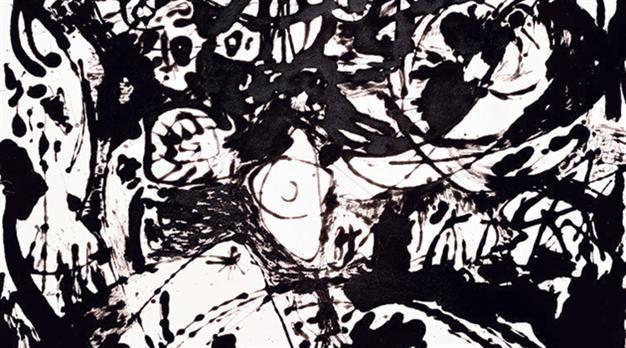Abstracts prepare to collect $100 million
NEW YORK - Reuters

Abstract expressionism including Pollock could sell for total of $100 million
Eight masterpieces, all from a single collection, done by giants of American abstract expressionism including Jackson Pollock and Willem de Kooning, could sell for a total of $100 million when they are auctioned in New York, Sotheby’s said on Friday.All of the works, which will go under the hammer on Nov. 13, are from the collection of Milwaukee businessman Sidney Kohl and his wife Dorothy, who started to amass the works in the early 1970s.
“To offer a group of true masterpieces that have remained together in the same private collection for four decades is an event nearly unheard of in the art market,” Tobias Meyer, Sotheby’s worldwide head of contemporary art, said in a statement announcing the sale.
Collection offers a panoramic view
He added that the collection offers a panoramic view of the first generation of abstract expressionists and a remarkable opportunity for collectors.
Abstract expressionism was an American art movement based in New York that achieved international prominence after World War Two and was characterized by huge works.
Jackson Pollack’s “Number 4, 1951,” a rare drip painting on canvas in red, green, blue, yellow and silver, will lead the sale and is estimated to sell for as much as $35 million. Only eight drip paintings on canvas by Pollack have been auctioned in the last two decades.“1948-H” by artist Clyfford Still, which was painted after his one-man museum show in San Francisco in 1948, has a pre-sale estimate of as much as $20 million. It is expected to be a main attraction at the auction, along with de Kooning’s “Abstraction,” which was completed in 1949 and could also fetch $20 million. Other works in the sale include Franz Kline’s “Shenandoah,” Hans Hofmann’s “Nirvana” and Joan Mitchell’s “Untitled,” which each have pre-sale estimates of about $8 million, at the top of the range. Arshile Gorky’s “Impatience,” which the Kohls bought in 1973, and Adolph Gottlieb’s “Transfigurations” are also included.
















